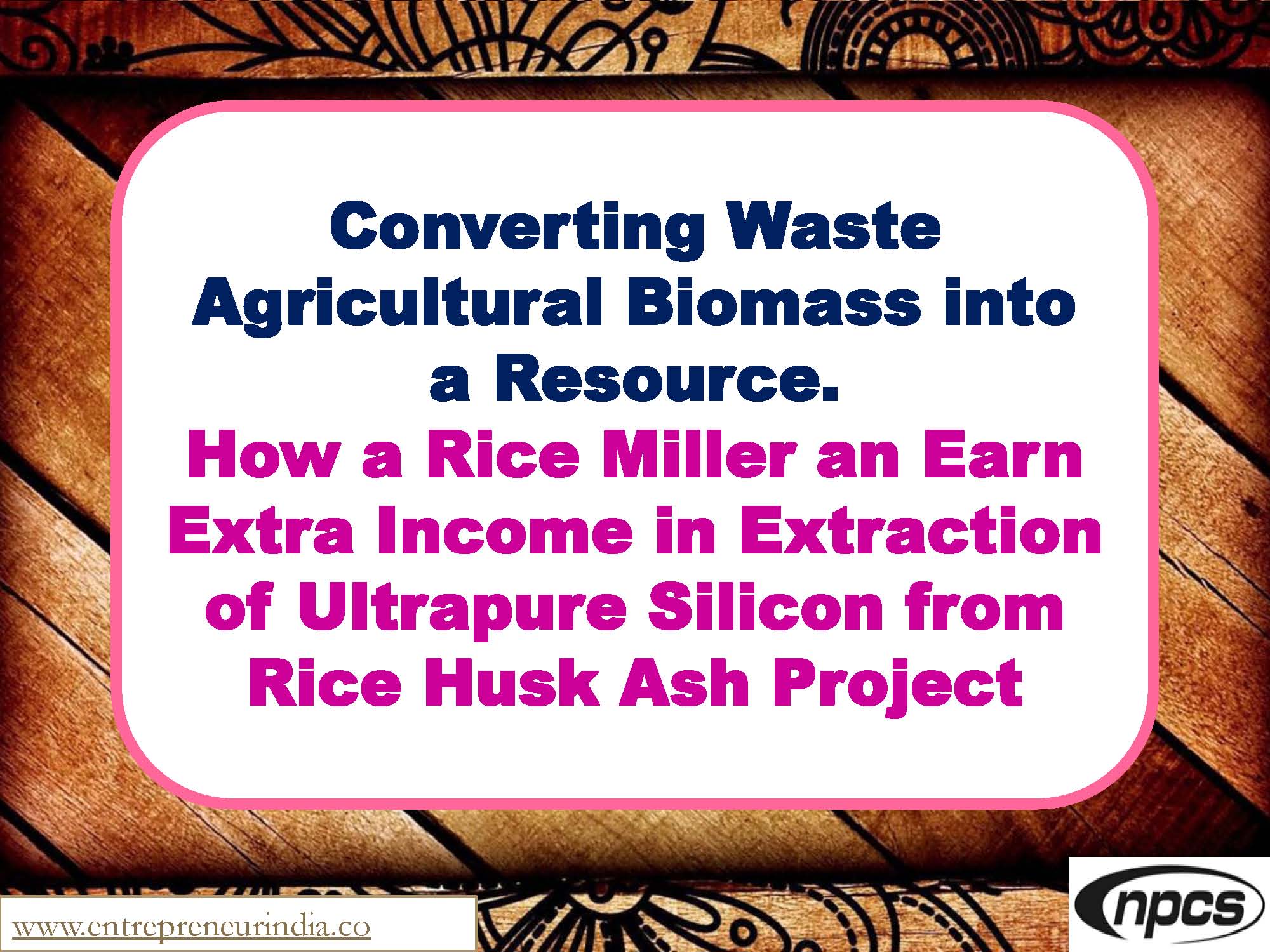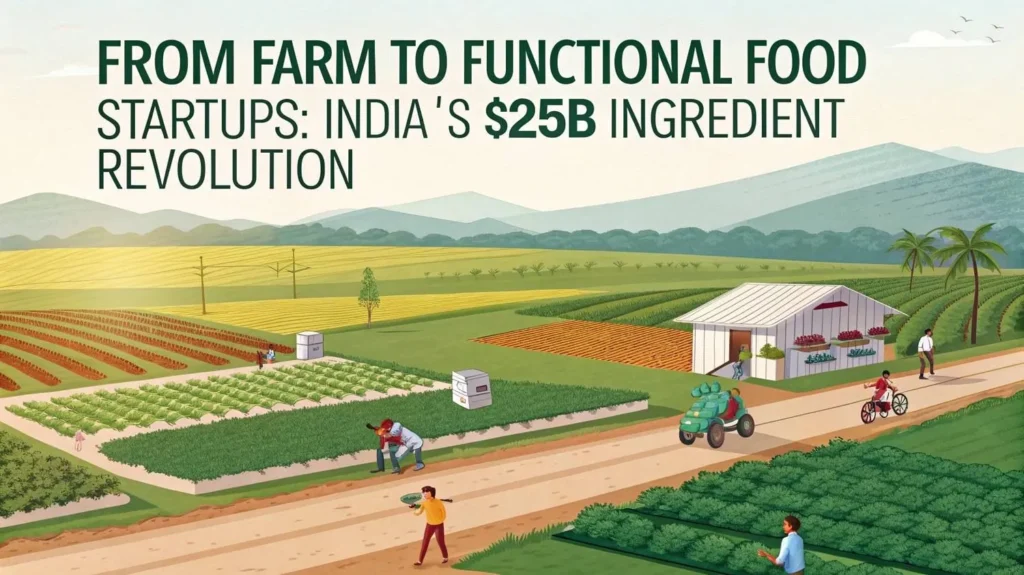
Agricultural practices generate a substantial amount of organic waste every year in the form of crop residues, husks, stalks, leaves, and shells. In many regions, these residues are burned in open fields, causing environmental pollution and loss of valuable material. However, with innovative technologies and increasing awareness about circular economy models, farmers and entrepreneurs are now converting waste agricultural biomass into a resource. This approach not only reduces pollution but also creates income-generating opportunities by transforming agricultural waste into valuable products such as biofuels, organic fertilizers, and industrial raw materials.
Converting Waste Agricultural Biomass into a Resource
The shift toward sustainable agriculture and renewable energy has unlocked new avenues for using agricultural biomass. This biomass, when processed correctly, can replace conventional materials in fuel, packaging, construction, and even healthcare sectors. Converting waste agricultural biomass into a resource is no longer an abstract environmental goal — it is a practical and profitable business strategy for rural development, waste reduction, and climate action.
Let’s explore the top ways agricultural biomass is being converted into valuable products and how this can generate sustainable economic value.
See Also :-Processing Business Ideas in Punjab
1. Bioenergy and Biofuel Production
One of the most commercially viable uses of agricultural biomass is in bioenergy production. Biomass from rice husk, sugarcane bagasse, cotton stalks, and corn cobs can be processed into:
-
Biogas through anaerobic digestion
-
Briquettes and pellets for clean cooking fuel
-
Bioethanol and biodiesel for transportation fuel
These renewable energy sources reduce dependency on fossil fuels while offering rural households an affordable and sustainable power option. Additionally, power plants and industrial boilers are adopting biomass-based fuels to meet clean energy goals, creating a steady demand.
2. Compost and Organic Fertilizer Manufacturing
Agricultural waste rich in nutrients can be turned into organic manure or compost. This reduces the need for chemical fertilizers and improves soil health. The composting process involves:
-
Collecting biomass such as straw, leaves, and fruit peels
-
Combining it with cow dung or microbial cultures
-
Aerating the mixture until decomposition completes
Farmers can either use this organic compost for their own fields or package and sell it locally. Vermicompost, enriched compost, and bio-fertilizers are in demand among organic farmers and gardeners, making this an affordable and effective way to convert waste agricultural biomass into a resource.
See Also :- Processing Business Ideas in Rajasthan
3. Biodegradable Tableware and Packaging
Agro-waste like wheat bran, sugarcane bagasse, and rice husk is increasingly being used to produce eco-friendly tableware and packaging materials. This industry is growing due to rising bans on single-use plastics and global environmental concerns. Products include:
-
Disposable plates, cups, and spoons
-
Food containers and delivery boxes
-
Biodegradable packaging films and wraps
With a small processing unit and access to local crop residues, entrepreneurs can build scalable businesses while contributing to environmental sustainability.
4. Biomass for Construction Materials
Waste biomass can be processed into construction-grade materials such as:
-
Particle boards and fiberboards from wheat and rice straw
-
Compressed bricks made from husks and bagasse
-
Thermal insulation panels from coconut coir or corn stalks
These materials are lightweight, cost-effective, and environmentally sustainable, offering an alternative to wood-based or synthetic materials. The construction industry is increasingly adopting such innovations in green buildings and rural housing schemes.
See Also :- Processing Business Ideas in Telangana
5. Mushroom Cultivation on Agro-Waste
Another innovative use of agricultural biomass is in mushroom farming. Various types of edible mushrooms, like oyster and button mushrooms, grow well on:
-
Paddy straw
-
Wheat husk
-
Maize stalk
-
Sugarcane bagasse
Setting up a mushroom unit requires low investment, and the returns are relatively quick. After harvesting, the leftover material can be reused as compost or animal feed, further increasing resource efficiency.
6. Biochar Production for Soil Enrichment
Biochar is a carbon-rich material produced by pyrolyzing agricultural biomass in the absence of oxygen. It is used as a soil amendment that:
-
Retains nutrients and moisture
-
Enhances microbial activity
-
Reduces greenhouse gas emissions from soil
Biochar production not only reduces the volume of agro-waste but also improves farm productivity. It can be sold in bulk to organic farms, garden centers, or even exported to eco-conscious markets abroad.
See Also :- Make Money From Rice Husk Ash
7. Industrial Raw Material for Paper and Pulp
Paper and pulp industries are increasingly turning to agro-based fibers due to the scarcity and cost of wood pulp. Biomass materials such as:
-
Cotton stalk
-
Banana fiber
-
Jute sticks
-
Wheat straw
are being used to manufacture:
-
Writing and printing paper
-
Corrugated boxes
-
Tissue paper and napkins
This model promotes sustainable forestry and creates a new income stream for farmers supplying crop waste as raw material.
8. Feedstock for Cattle and Poultry
Many types of agricultural biomass — such as maize husk, groundnut shells, or cottonseed meal — can be converted into animal feed or fodder. This processed feed is used in:
-
Dairy farms
-
Poultry farms
-
Goat and sheep farming
With increasing demand for protein-rich diets, processed animal feed made from agro-waste has become a booming industry. It is affordable for farmers and offers better nutritional value than unprocessed fodder.
See Also :- Manufacturing & Processing Business Ideas in Goa
9. Craft and Handicraft Raw Material
In rural and tribal regions, agro-waste is creatively transformed into decorative and utility items, such as:
-
Baskets and mats from date palm leaves or bamboo
-
Lampshades and wall hangings from corn husk
-
Coasters and trays from rice straw
These products have growing demand in urban lifestyle and export markets. Supporting this form of biomass utilization strengthens local economies and preserves traditional art forms.
10. Enzyme and Biochemical Extraction
Advanced research in biotechnology has enabled the extraction of valuable enzymes, antioxidants, and bio-chemicals from agricultural residues. These include:
-
Pectin from fruit peels
-
Xylanase and cellulase from straw
-
Essential oils from citrus waste
Such bioactive compounds are used in pharmaceuticals, cosmetics, textiles, and food industries. Though this method requires R&D and processing expertise, it adds immense value to biomass that was once considered waste.
Government Support and Incentives
Governments at both central and state levels are increasingly supporting efforts aimed at converting waste agricultural biomass into a resource. Key schemes include:
-
National Bio-Energy Mission – Subsidies for biomass power plants
-
PM KUSUM Yojana – Support for solar-biomass hybrid models in farms
-
Startup India and MSME Support – Funding for agri-waste based innovations
-
State-level Agri Infrastructure Funds – Incentives for composting, biogas, and processing units
Farmers, entrepreneurs, and cooperatives can take advantage of these schemes to build financially sustainable and environmentally beneficial ventures.
Conclusion
In conclusion, converting waste agricultural biomass into a resource presents a unique opportunity to tackle environmental waste, boost rural income, and build sustainable businesses. From bioenergy and compost to biodegradable packaging and industrial inputs, the potential uses of agricultural biomass are vast and rapidly growing. With the right strategy, investment, and community participation, agricultural residues can become an economic asset rather than a disposal challenge. Embracing these circular solutions is not just good for the planet — it’s good for business too.



